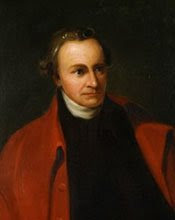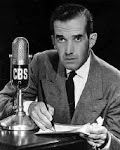Daylight-saving time may cause heart attacks, accidents
Although daylight-saving time was sold politically as an energy-conservation measure, it does no such thing. Studies conducted in Indiana prior to 2006, when that state operated under three different time regimes, show either no difference in energy consumption or a small increase in power usage during the months after clocks were moved one hour ahead.
The annual ritual of springing forward and falling back thus possibly produces no energy savings and may be counterproductive.
Dr. Osvaldo Bustos of George Washington University's School of Medicine pointed out to me that shifting time forward or backward has negative, and possibly deadly, health consequences.
A Swedish study published in The New England Journal of Medicine on Oct. 30, 2008, reports increases in the incidence of myocardial infarction (heart attack) after the beginning of daylight-saving time and the subsequent return to standard time.
Depending on whether the shift occurred in the fall or spring, men and women were found to vary in the extent to which their heart-attack risks were increased, but the study's authors concluded from the clinical evidence that the time change triggered more myocardial infarctions in the two groups overall than they would have suffered otherwise.
The underlying causal mechanism has to do with how the hypothalamus regulates humankind's circadian rhythms. When the "clock" that governs those rhythms abruptly is shifted one hour forward or backward, it struggles to adjust the body's internal physical, chemical, electrical, hormonal and immunological environment to the new conditions. Most people, fortunately, are made aware of the hypothalamus' attempts to cope by having to put up with feeling groggy and being less productive at work or at home for a few days only.
It would be cold comfort were only a small fraction of the population subject to the untoward health consequences of time shifting. As the Swedish study notes, more than 1.5 billion people around the globe are exposed to the transitions demanded of them at the beginning and ending of daylight-saving time. Many of the companies located overseas that provide technical support or other services to U.S. businesses operate on New York time.
When a small elevated risk of heart attack per person is multiplied by the 1.5 billion people exposed to that risk, you realize that many men and women suffer debilitating heart attacks and death every time we spring forward and fall back.
Some students of daylight-saving time suggest that accidents involving pedestrians spike immediately after the return to standard time as well, because drivers have not yet adjusted to commuting home in the dark.
There are few, if any, measurable benefits from switching to daylight-saving time in the spring and back to standard time at the end of October. But time shifting imposes real costs.
William F. Shughart II is the F.A.P. Barnard Distinguished Professor of Economics at the University of Mississippi and a senior fellow at The Independent Institute in Oakland, Calif. Web site: www.independent.org
Source: Azstarnet
Source: Azstarnet


















No comments:
Post a Comment